
Case Study
MAJOR CORRUGATED BOX MANUFACTURER GETS LEAN WITH FLEXPIPE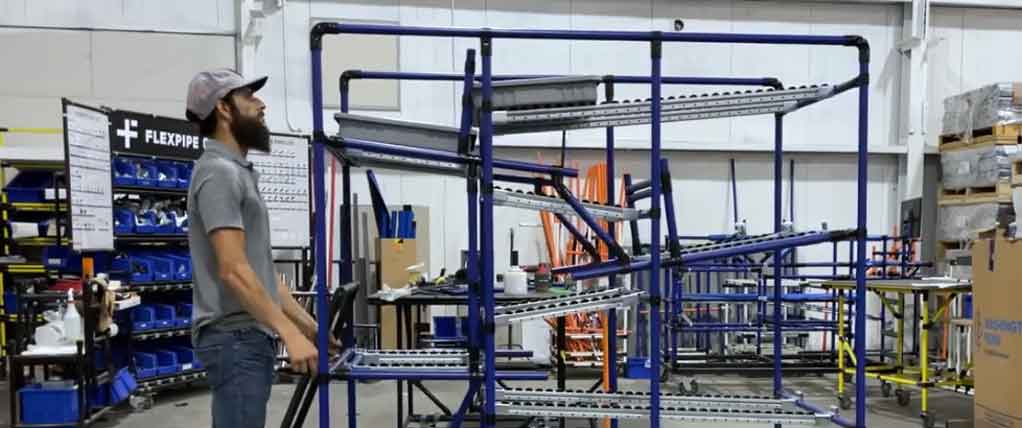
Post
FOUR BENEFITS OF KARAKURI IN LEAN OPERATIONS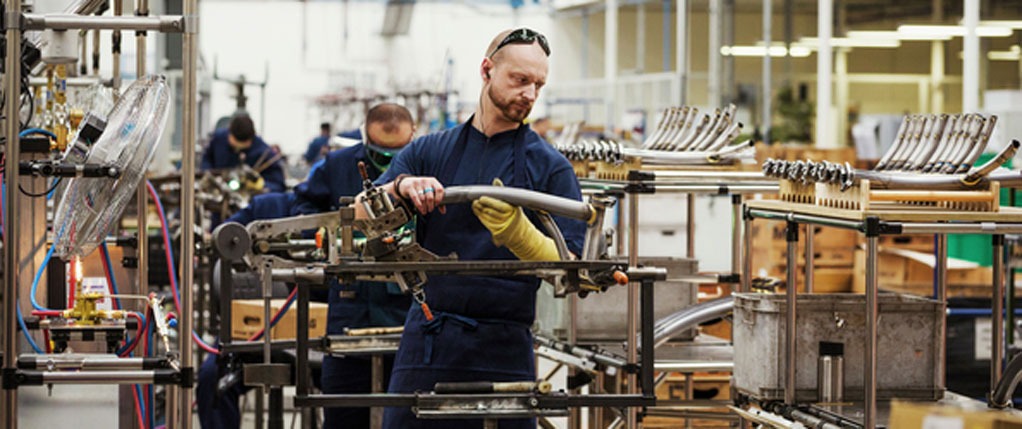
Post
10 TIPS TO REDUCE CHANGE RESISTANCE WHEN INTRODUCING LEAN MANUFACTURING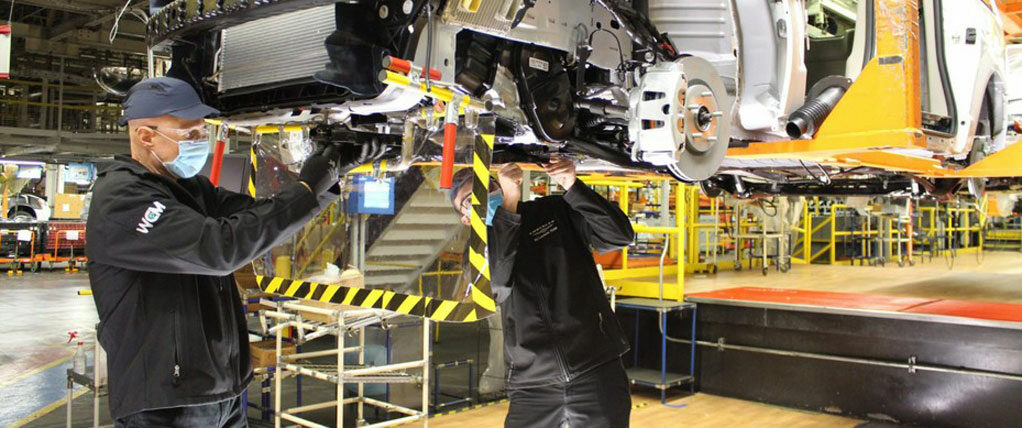
Jerry Collins – a mechanical engineer with 28 years of experience in the automotive industry – uses the pre-production stage as the critical first step to managing future production costs. It’s during this pre-production stage that Jerry uses modular piping systems as a way to layout his production floor and design material handling systems. This reduces costs and makes it easier to modify those handling systems (if needed) once full-scale production starts.
Find out how any company in any industry can benefit from using tube and joint systems in the pre-production stage as a way to manage costs.
Lean manufacturing can trace its roots back to Henry Ford’s infamous Model T assembly line and the Toyota Production System (TPS) of the early twentieth century. Sometimes referred to as “lean production” or “just-in-time manufacturing”, lean manufacturing focuses on increasing production throughput while controlling costs and minimizing waste.
With lean manufacturing, companies can increase production throughput without sacrificing their cash position or purchasing excessive inventory. Unfortunately, a large number of companies use some lean concepts while never fully implementing others.
Instead of using lean manufacturing principles during the pre-production stage, several companies only adopt lean concepts long after production has started. Unfortunately, this puts them in a read-and-react position where unforeseen changes in product designs force them to make haphazard and extremely costly adjustments. However, Jerry took an entirely different approach.
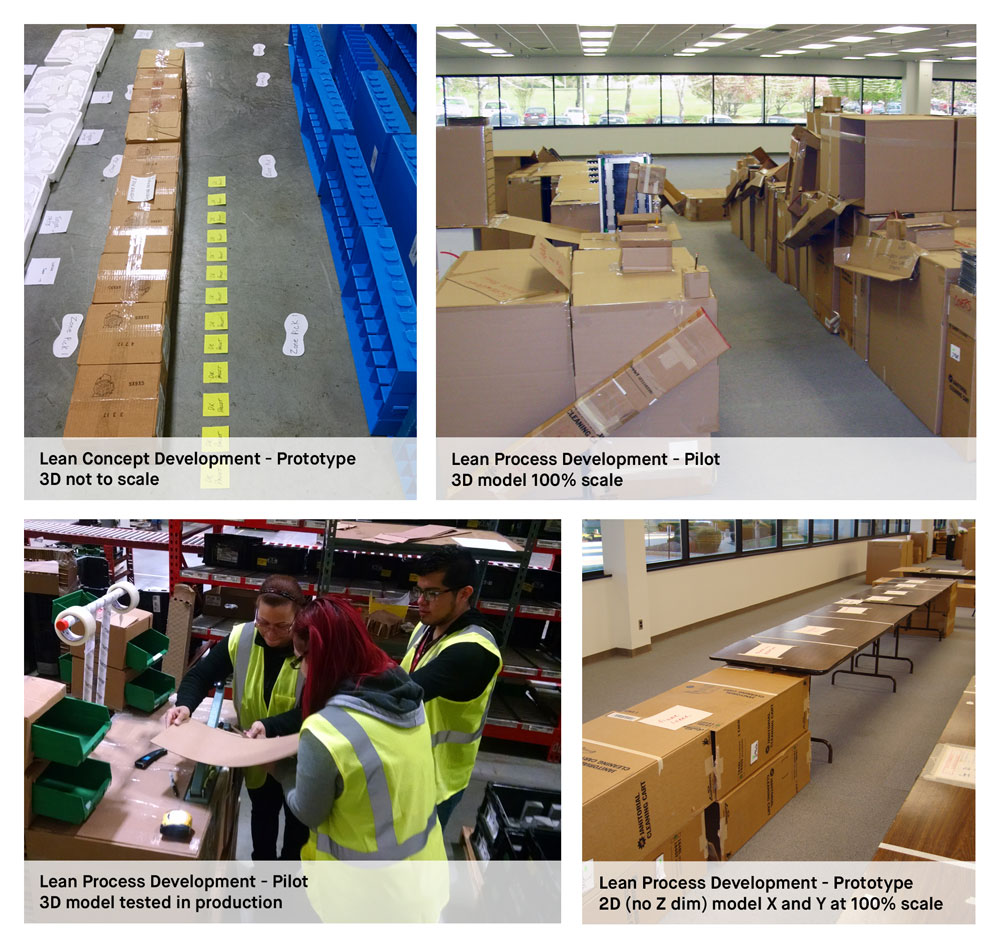
Jerry and his team used modular piping solutions to create a mockup front axle and rear axle assembly line for General Motors. As stated by Jerry, “long before we purchased any equipment, we created a whole facility with modular piping and decided early on how our material handling systems would be structured.” This included using tube and joint systems to create mock machines and equipment in order to create a visual presentation of both on the shop floor.
They also used modular piping to create trolleys to test the transit times between work cells, all the while looking for any possible obstructions. They then created temporary structures in order to simulate how future material handling systems would be positioned beside work cells, equipment, and machinery.

Jerry and his team of engineers chose modular piping solutions during the preproduction stage because of how easily it was to make simple changes. Some of the changes they made to their mock layout took mere minutes, something that is completely impossible to achieve with fixed material handling systems. As Jerry stated, “companies need to plan their material handling systems early on so they can maintain and improve upon their profits margins later.”
Ultimately, the tube and joint solutions replaced all of their larger, fixed-structure material handling frames. According to Jerry, making a single adjustment to their older material handling structures involved sending their heavy-duty racks to “a third party for welding and adjustments which could take weeks and months, whereas if you have a product like Flexpipe, it can be done in an afternoon.”
For Jerry and his team, adopting modular piping systems during the pre-production stage ensured everybody was comfortable with using the solution once production began. So, what are the inherent benefits of using modular piping during the initial pre-production stage?
Adopting lean concepts in the pre-production stage by using tube and joint systems has three primary benefits. First, it amalgamates the costs associated with laying out the entire production floor for equipment and machinery, while totaling the costs for standing structures, workbenches, shelving, trolleys, flow racks, boards, etc.
This provides companies with a complete picture of their costs. It also allows companies to decide upon how much actual square footage they need for manufacturing. They can avoid the extra costs of leasing/buying too much production space, or conversely, avoid the high costs and delays that come from not having enough production space.
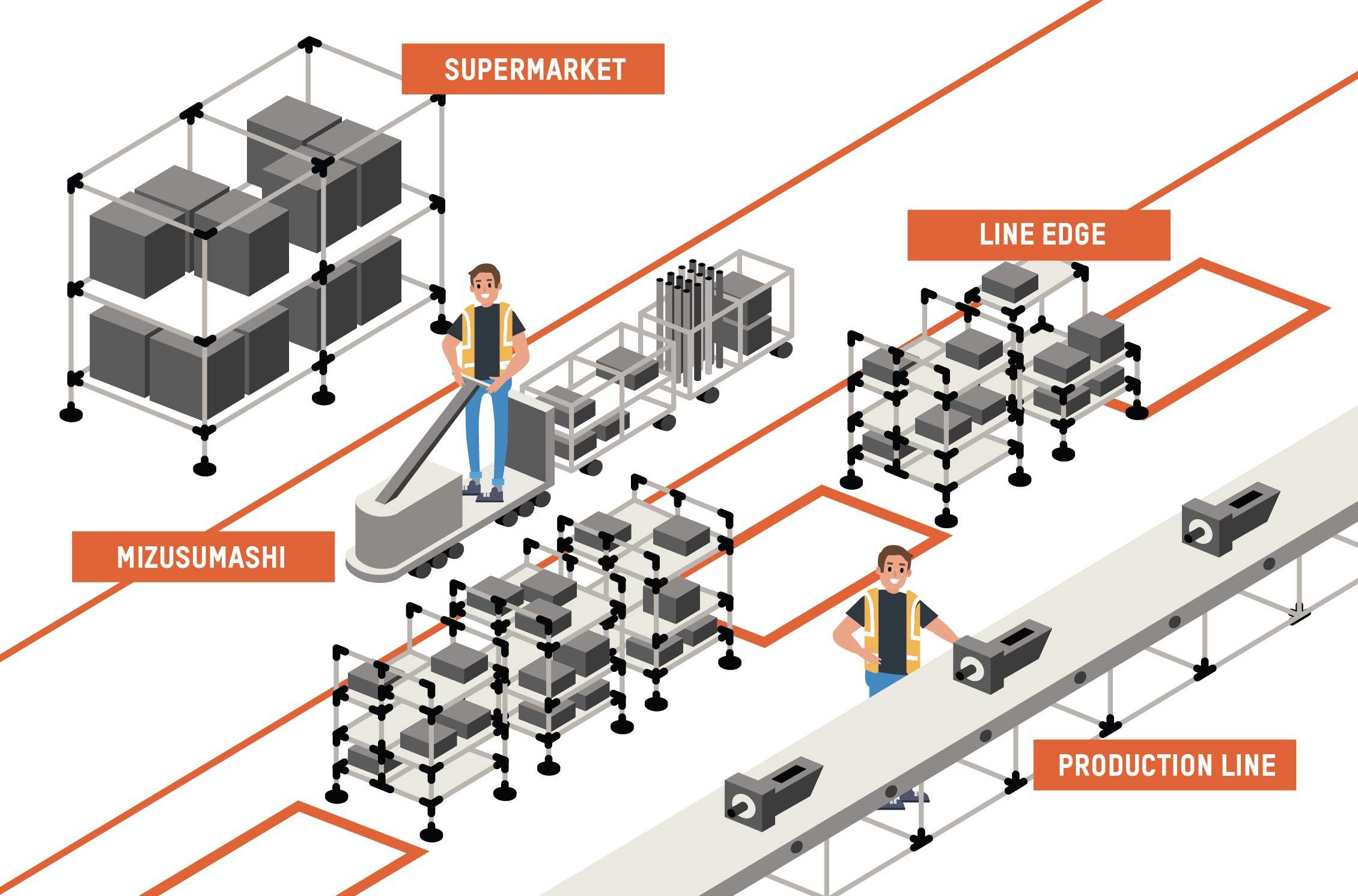
Second, using modular piping solutions in pre-production helps to simplify workflow. Companies have a much easier time choosing which modular piping solutions are needed for all their T-shaped, U-shaped, and S or Z-type work cells. This allows them to maximize the transit times between production work cells, equipment, machinery, and other standing structures. It also helps them choose ideal locations for inventory and part storage.

Third, by adopting tube and joint systems in the pre-production stage, employees are better able to make quick modifications to standing structures and material handling systems once production begins. No more waiting on welding or having to send out heavy-duty racks to third-party suppliers for modifications that may take weeks or months. Instead, with tube and joint systems, the employees can make the changes themselves.
Modular piping is a product designed with lean concepts in mind. Making changes to modular material handling systems is faster, simpler, and far less expensive when compared to fixed-structure systems.
Again, any company in any industry can use the same approach. It simply comes down to using the following four steps.
1.Use Spaghetti Diagrams to Define Workflow
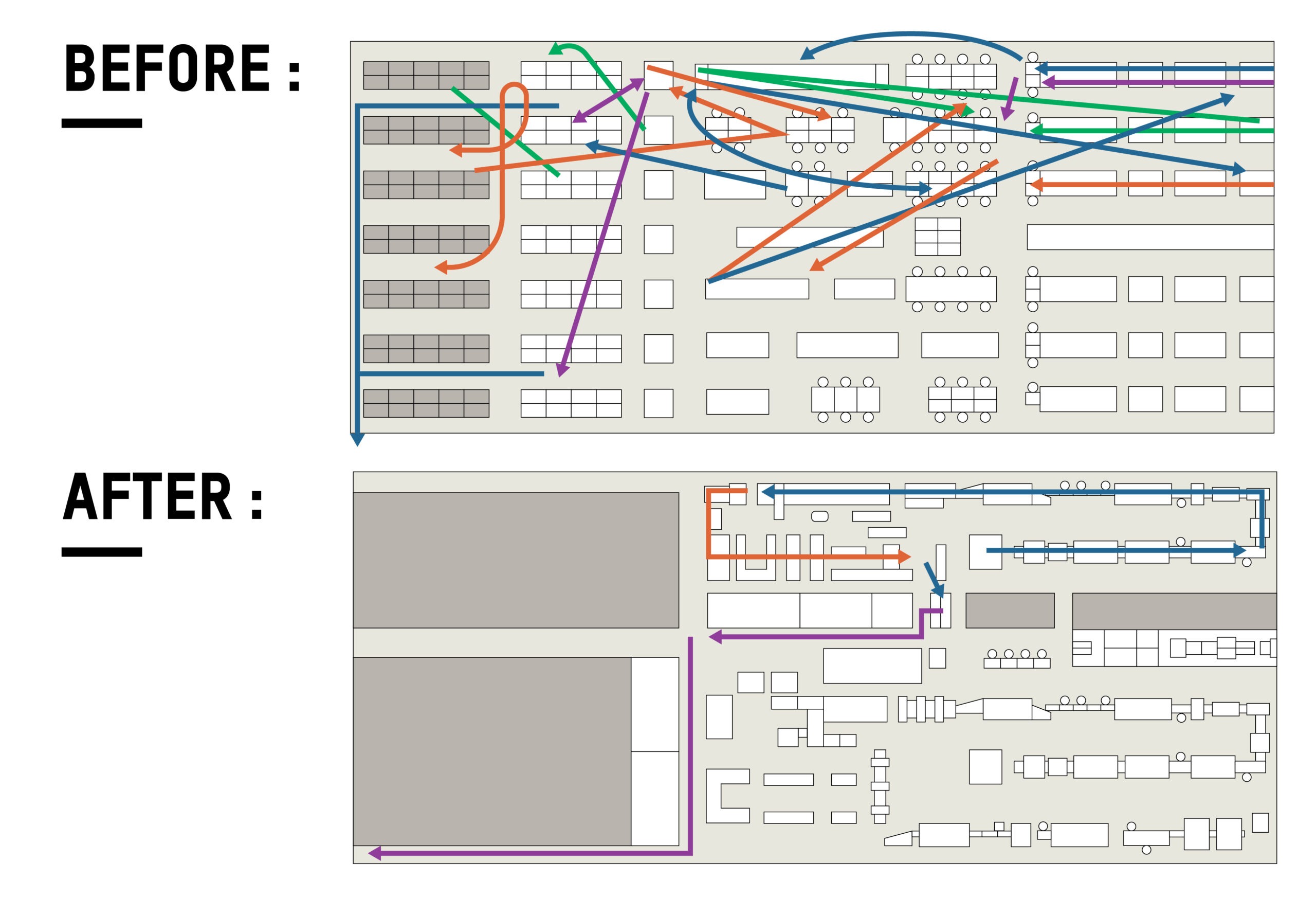
Spaghetti diagrams allow you to map your workflow so that you have a visual presentation of how physical parts move between part storage, material handling systems, work cells, equipment, and machinery. The goal is to have a sequential process where the parts move naturally and employees aren’t required to walk extremely long distances to move those parts to the next chain in the process.
2.Gather Information About Machinery & Equipment
Defining the physical size of equipment and machinery is an important aspect of maximizing available shop floor space. You’ll need to define the physical dimensions of equipment and machines and visualize how they will be laid out on the shop floor.
3.Define Number of Material Handling Systems
Once you’ve defined the areas of your shop floor occupied by machinery and equipment, it becomes easy to determine the number of material handling systems you’ll require. To help you in the design of those systems, Flexpipe has created the Flexpipe Creator Extension, an innovative software-based solution that allows you to simplify your designs.
4.Simulate Transit Times
By now, your shop floor should be mocked up with locations for equipment, machinery, standing structures, work cells, and material handling systems. A proactive final step involves simulating transit times between each of these structures to ensure that there is sufficient space for employees to move parts and that the distances they travel aren’t too far.

Flexpipe is an industry leader in tube and joint systems with a strong North American footprint. Long recognized as an innovator, Flexpipe is well-known for its affordable modular piping solutions (30% less expensive) and its customer-centric approach to customer service and after-sales support.